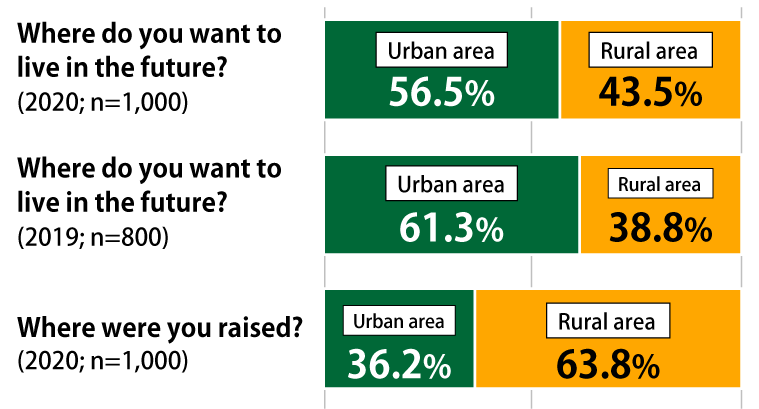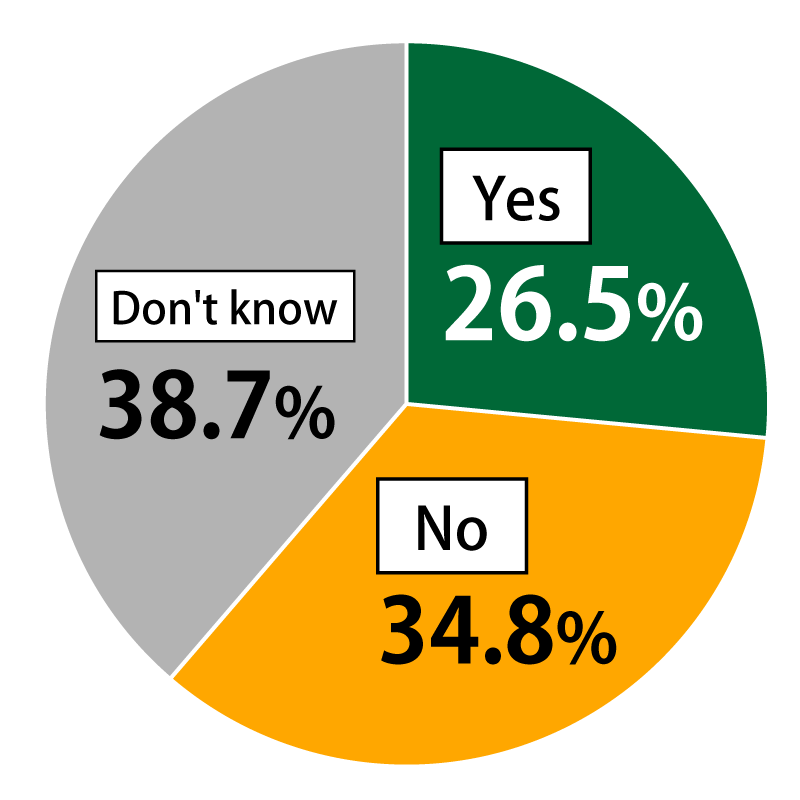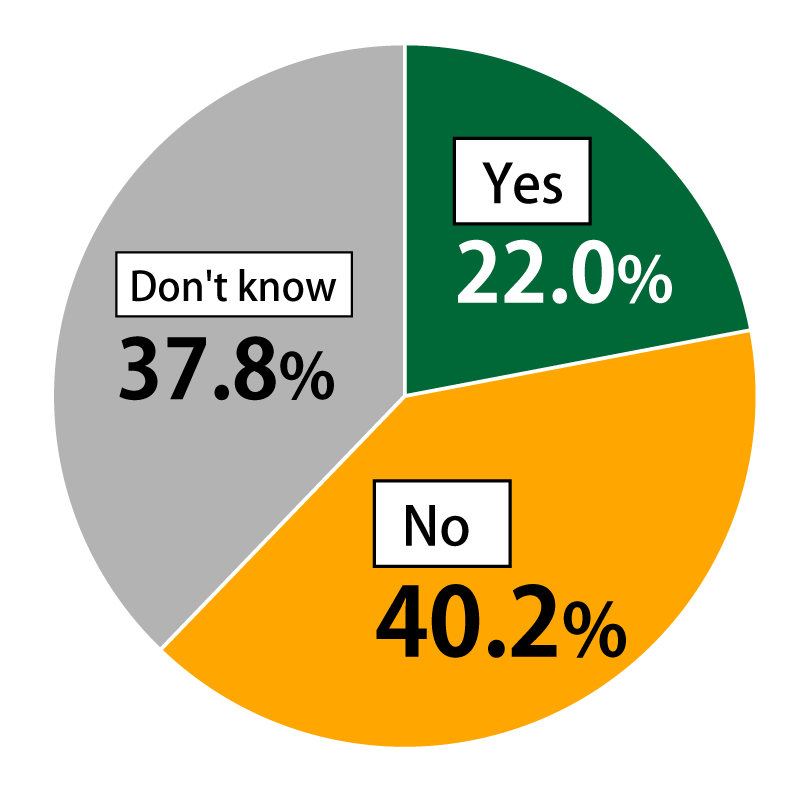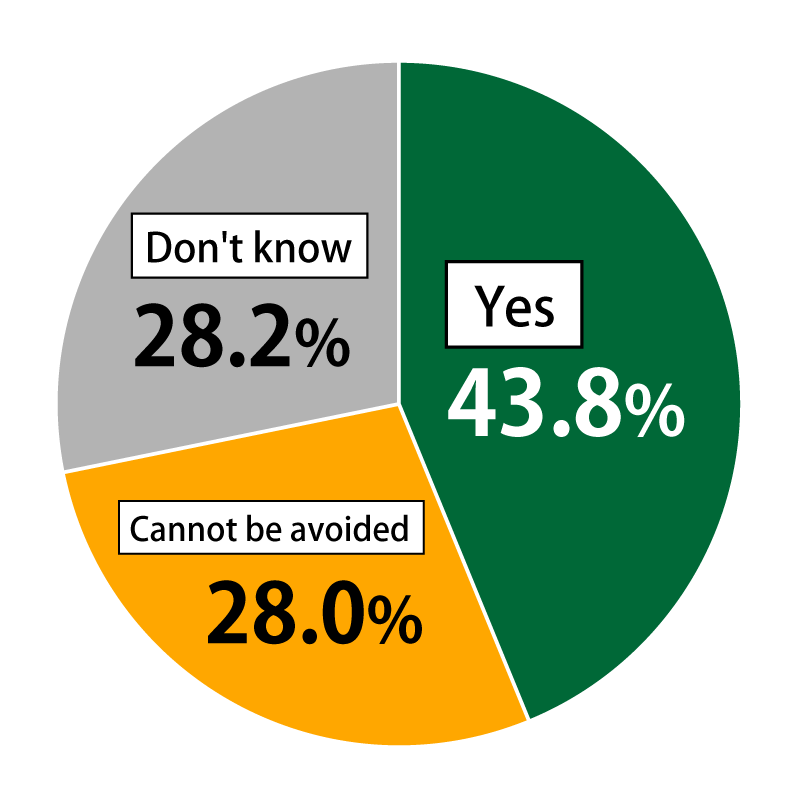Awareness Survey of 18-Year-OldsResults of 29th installment announced
The 29th installment of the Awareness Survey of 18-Year-Olds, launched by The Nippon Foundation in October 2018, was carried out in early August on the theme of “Regional Revitalization.” The survey showed that roughly 56% of respondents want to live in an urban area in the future, compared with roughly 43% who want to live in a rural area. By comparison, in the 10th installment of the Awareness Survey of 18-Year-Olds, carried out on the same theme in January 2019, roughly 61% of respondents wanted to live in an urban area in the future, while roughly 39% wanted to live in a rural area. Of those respondents in this year’s survey who want to live in an urban area, the top reasons given were “daily life agrees with me” and “amusement, entertainment, recreation, etc.,” while those who want to live in a rural area cited “abundant natural environment” and “daily life agrees with me.” In making their choice, roughly 44% said that they took the risk of infection of the new coronavirus into consideration.
Notes:
- From the 13th survey, the number of respondents, comprising men and women aged 17 to 19, has been increased to 1,000 from 800. (With the exception of the 20th installment, “Awareness Survey of Society and Country,” all surveys cover respondents in Japan only.)
- In the information below, differences between total amounts and simple sums are due to rounding.
Survey 29. Regional Revitalization (Results announced on September 29, 2020)
Finding: More than half of respondents want to live in an urban area in the future. (n = 1,000)

Of those respondents who want to live in an urban area, the top reasons given were: (multiple answers allowed; n = 565)
- Daily life agrees with me – 63.4%
- Amusement, entertainment, recreation, etc. – 51.2%
- Plentiful employment opportunities – 37.5%
- Diverse range of opportunities – 30.6%
- Many universities and other educational institutions – 28.1%
Of those respondents who want to live in a rural area, the top reasons given were: (multiple answers allowed; n = 435)
- Abundant natural environment – 51.5%
- Daily life agrees with me – 50.1%
- Public safety – 38.9%
- It is where I was raised – 37.5%
- Lower risk of infection – 20.9%
Finding: Roughly one-fourth of respondents believe that the spread of the new coronavirus will have an effect on reducing the population shift toward large cities, while roughly one-third do not. (n = 1,000)
“Do you believe the spread of the new coronavirus will have an effect on reducing the population shift toward large cities?”
- Yes – 26.5%
- No – 34.8%
- Don’t know – 38.7%

Among all respondents, the top measures seen as being needed to reduce the population shift toward large cities were: (up to 3 answers allowed; n = 1,000)
- Promotion of remote work by companies – 35.7%
- Securing employment for young people – 31.0%
- Payment of higher wages by regional companies – 24.0%
- Relocation support – 23.0%
- Information and telecommunications access – 20.0%
- Promotion of private-sector investment into regional areas 15.2%
- Availability of child care – 13.3%
- Enticement for entertainment industries – 13.0%
- Transfer of central government functions and agencies – 11.6%
- Local contributions by regional universities – 9.0%
- Increased emphasis on “local production for local consumption” – 6.7%
- Other – 1.3%
- Don’t know – 18.2%
Finding: 40% of respondents do not expect young people to become more inclined to live in rural areas. (n = 1,000)
Some are saying that the new coronavirus will increase interest in living in rural areas. “Do you expect young people to become more inclined to live in rural areas?”
- Yes – 22.0%
- No – 40.2%
- Don’t know – 37.8%

Among respondents who expect young people to become more inclined to live in rural areas, the top reasons given were: (up to 3 answers allowed; n = 220)
- With telework, it is not necessary to live near the office – 48.6%
- There is less risk of infection in rural areas – 48.6%
- With information and telecommunications technology, an environment for education can be maintained – 30.5%
- With online shopping, an urban lifestyle is possible – 30.5%
- Information and telecommunications technology makes it possible to expand personal networks from rural areas – 25.5%
- The new coronavirus makes interaction with local communities that much more important – 19.1%
- Information and telecommunications technology makes it possible to enjoy leisure time similar to in an urban area – 18.6%
- Other – 0.5%
Among respondents who do not expect young people to become more inclined to live in rural areas, the top reasons given were: (up to 3 answers allowed; n = 402)
- Urban areas are better – 66.9%
- More types of entertainment and recreation are available in urban areas – 56.5%
- Urban areas have more universities and other educational institutions – 40.5%
- There is more interaction with others in urban areas – 24.6%
- Remote work is temporary and office work will remain the norm – 18.4%
- Urban areas have better medical systems – 15.4%
- It is difficult to participate in local communities in rural areas – 15.4%
- Other – 4.0%
Finding: More than 40% of respondents consider the possible disappearance of rural towns and villages to be a problem. (n = 1,000)
After peaking at 128 million in 2008, Japan’s population has been declining. “Do you consider the possible disappearance of rural towns and villages to be a problem?”
- Yes – 43.8%
- Cannot be avoided – 28.0%
- Don’t know – 28.2%

Contact
Public Relations Team
The Nippon Foundation
- Email:cc@ps.nippon-foundation.or.jp



